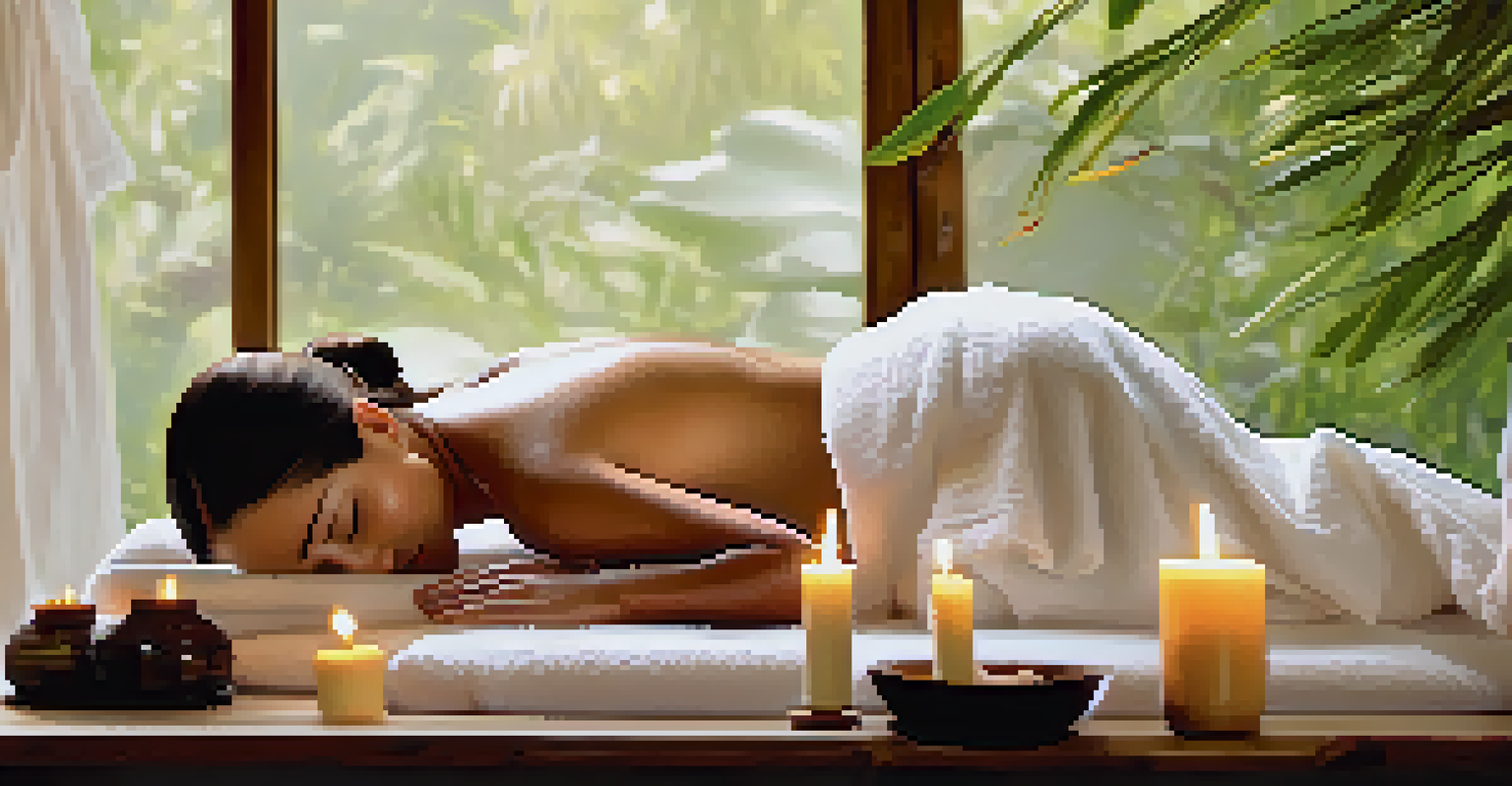Essential Oils 101: A Beginner's Guide to Aromatherapy

What Are Essential Oils? An Introduction to Aromatherapy
Essential oils are concentrated extracts from plants, capturing their natural fragrance and therapeutic properties. They are obtained through methods like steam distillation or cold pressing, which preserve the plant's essence. Aromatherapy, the practice of using essential oils for healing and wellness, dates back thousands of years, rooted in ancient cultures.
Essential oils are the most powerful healing agents in the world.
These oils can influence your mood, physical health, and overall well-being. For instance, lavender is known for its calming effects, while peppermint can invigorate your senses. By simply inhaling their scent or using them in a diffuser, you can tap into their benefits.
As you explore aromatherapy, think of essential oils as nature's little powerhouses. Each oil has unique qualities, making them versatile tools for enhancing your daily life.
How to Choose Quality Essential Oils
Not all essential oils are created equal; quality is crucial for effective results. Look for oils that are labeled '100% pure' and sourced from reputable companies. Avoid those that contain synthetic additives or fillers, which can diminish their therapeutic benefits.

When browsing, check for essential oils that have undergone rigorous testing, like gas chromatography or mass spectrometry. This ensures that what you’re getting is authentic and safe. Reading customer reviews can also provide insights into the oil's effectiveness and quality.
Understanding Essential Oils
Essential oils are concentrated plant extracts used in aromatherapy to enhance mood and well-being.
Remember, investing in high-quality essential oils pays off in the long run. They not only work better but also offer peace of mind knowing you're using a product that's genuinely beneficial.
Common Essential Oils and Their Benefits
There are countless essential oils, but some popular choices include lavender, eucalyptus, tea tree, and lemon. Lavender is famous for promoting relaxation and sleep, while eucalyptus can clear your airways and support respiratory health. Tea tree oil is known for its antiseptic properties, making it a favorite in skincare.
Aromatherapy is the use of essential oils for healing and enhancing the quality of life.
Lemon oil, with its uplifting scent, can enhance focus and boost your mood, making it perfect for a midday pick-me-up. Each oil has its own set of benefits, so it's helpful to keep a few staples on hand for different needs.
As you experiment with various oils, consider creating your own blends tailored to your preferences. This personalized approach can deepen your connection to the oils and enhance their effects.
How to Use Essential Oils Safely
While essential oils are powerful, safety should always come first. Always dilute oils with a carrier oil, such as coconut or jojoba oil, before applying them to your skin. This prevents potential irritation and ensures a safe experience.
Avoid using essential oils directly on sensitive areas, like the face or mucous membranes. It's also wise to perform a patch test on a small skin area to check for any adverse reactions before fully incorporating a new oil into your routine.
Choosing Quality Oils Matters
Opt for '100% pure' essential oils from reputable sources to ensure effectiveness and safety.
Finally, consult a healthcare professional if you're pregnant, nursing, or have underlying health conditions. This ensures that you're using essential oils in a way that's safe for your specific situation.
Inhalation Methods: Diffusing and Direct Inhalation
One of the simplest ways to enjoy essential oils is through inhalation. You can use a diffuser, which disperses the oil into the air, creating a soothing atmosphere. Simply add a few drops of your chosen oil, fill it with water, and turn it on to fill your space with delightful aromas.
Alternatively, you can try direct inhalation by placing a few drops on a tissue or cotton ball and breathing in the scent. This method provides an instant boost, perfect for those moments when you need a quick mood lift or focus.
Both methods allow you to experience the benefits of essential oils without the need for complicated setups. Choose the method that best fits your lifestyle and enjoy the fragrant journey.
Topical Applications: Massage and Skincare
Topical applications of essential oils can enhance your skincare routine and provide relaxation. When diluted with a carrier oil, they can be used for massages, helping to relieve tension and soothe sore muscles. Imagine the bliss of a calming lavender massage after a long day – it’s a spa experience at home!
You can also incorporate essential oils into your skincare regimen. For instance, tea tree oil can help with acne, while frankincense is praised for its anti-aging properties. Just remember to dilute properly and choose oils that suit your skin type.
Safe Usage and Applications
Diluting essential oils and using proper application methods is crucial for safety and optimal benefits.
By using essential oils in your daily self-care, you're not only indulging in luxurious experiences but also reaping the benefits they offer for your skin and overall well-being.
Creating Your Own Essential Oil Blends
Once you're familiar with essential oils, why not try your hand at blending? Creating your own blends allows you to customize scents and benefits to fit your mood or needs. Start by selecting two or three oils that complement each other, like citrus for uplifting energy or florals for relaxation.
Experiment with different ratios to find the perfect balance that resonates with you. For instance, a blend of lavender and bergamot can create a calming yet uplifting aroma. Don’t hesitate to jot down your recipes to recreate your favorites later!

Blending is not only a fun creative outlet but also deepens your understanding of how different oils work together. You’ll soon find that your unique blends can transform your space and enhance your well-being.